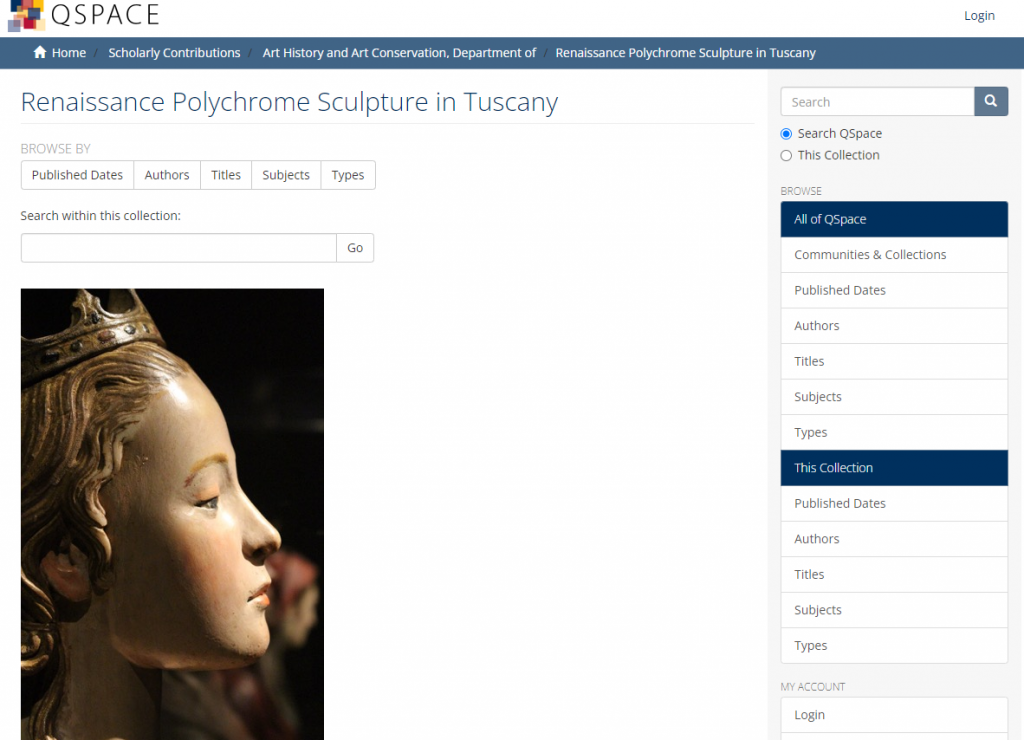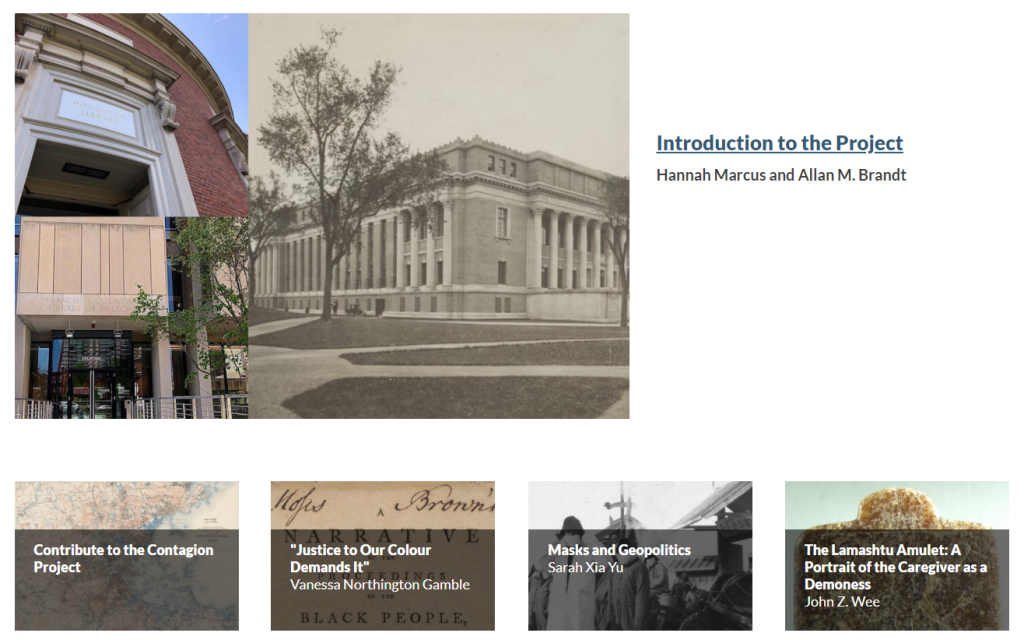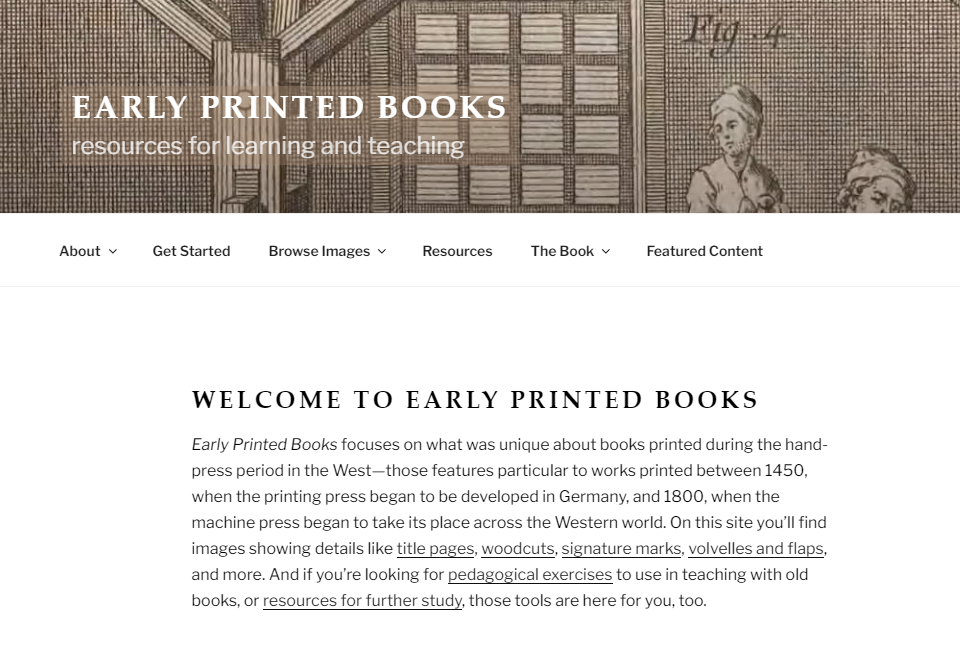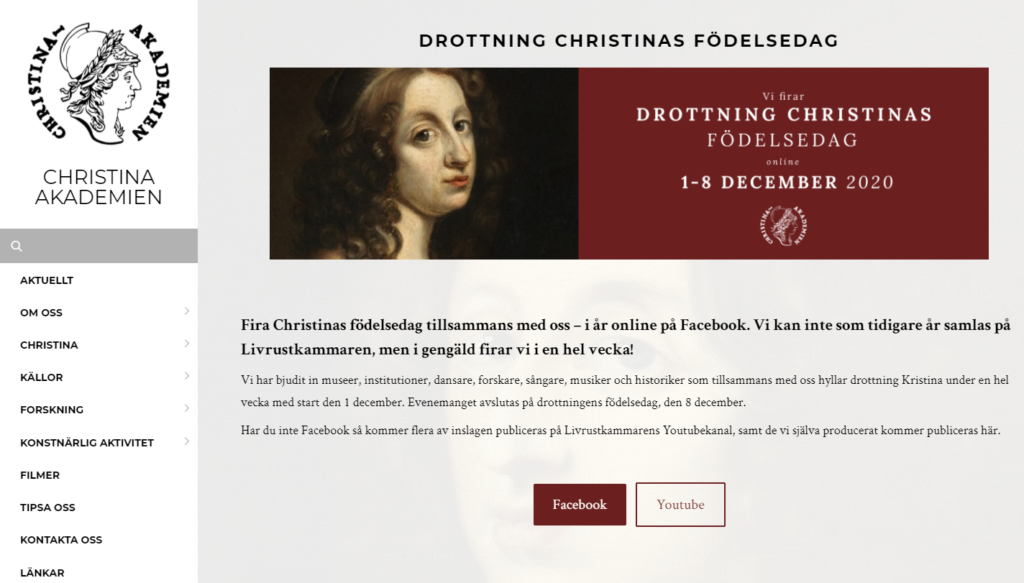
https://qspace.library.queensu.ca/handle/1974/14832
Renaissance Polychrome Sculpture in Tuscany is an open-access database of high-resolution photographs of and information (with a catalog entry and bibliography for each sculpture) about over 350 objects. Thousands of photographs are freely available for download and can be used without charge in research, teaching, and publication. An interactive digital map, colour coded by material, shows the current location of each object. The database would be of interest to scholars and students of art, materials and techniques, miraculous images, portraiture, gender representations, domestic devotion, altarpieces, hagiography, the history of childhood, orphanages, hospitals, pilgrimages, color, the surface or skin of an object, and other topics. (This database was created by Una D’Elia, Heather Merla, Rachel Boyd, and Bronwyn Bond, working with a team of librarians at Queen’s University, headed by Rosarie Coughlin.)









